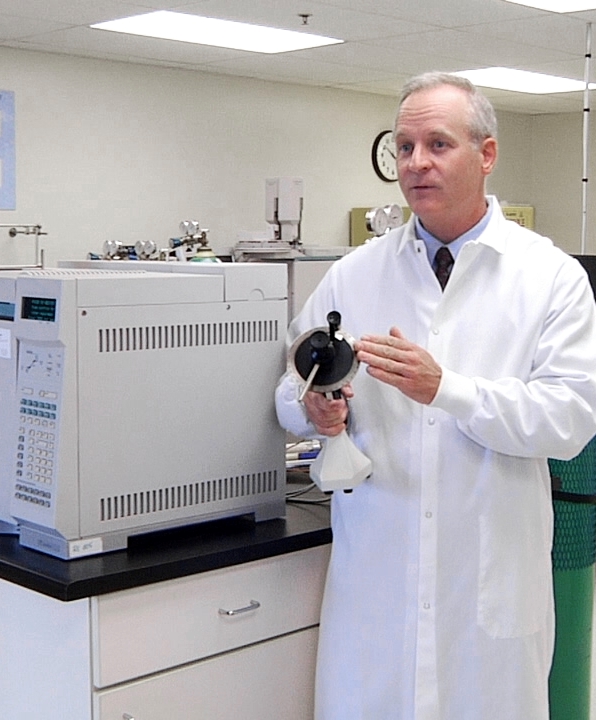What Our Scientists Do: Part One

Dr. Woolley is holding an optical rotometer, the scientific instrument that enabled YL to show that the species of B. carterii and B. sacra are not synonymous but are two distinct frankincense species.
I didn’t have enough room last week to add the names of all of the other laboratory personnel. They work in the microbiology department, ensuring that quality-control criteria are met and also doing microbiological studies on the oils to make sure your product is the high quality that you expect. We study every aspect of the oil, not just the analytical chemistry part.
Here are some of my staff’s qualifications. I want you to know who is behind analyzing your oils, who is supporting what we’re doing here. You folks have something to be proud of. You have something to believe in.
As I mentioned last week, Dr. Cole Woolley, PhD, is our VP of global science and essential oil research. He has 27 years of oil and plant chemistry analytical studies. Cole is the one who first noticed that constituents in Boswellia sacra and Boswellia carterii had different optical rotations. This allowed us to write an important study that was published in the prestigious Journal of Chromatography A in 2012.
My goodness, Dr. Woolley travels all over the world. I set up the project and then I send Cole in to implement the work. That’s why I’m able to get more done because while he’s in Taiwan finishing a project, I’m in Jericho starting another one. Now we’re in Egypt and in Peru, and I have men like Cole who can follow behind and support me in this work, and we just keep going and growing.

